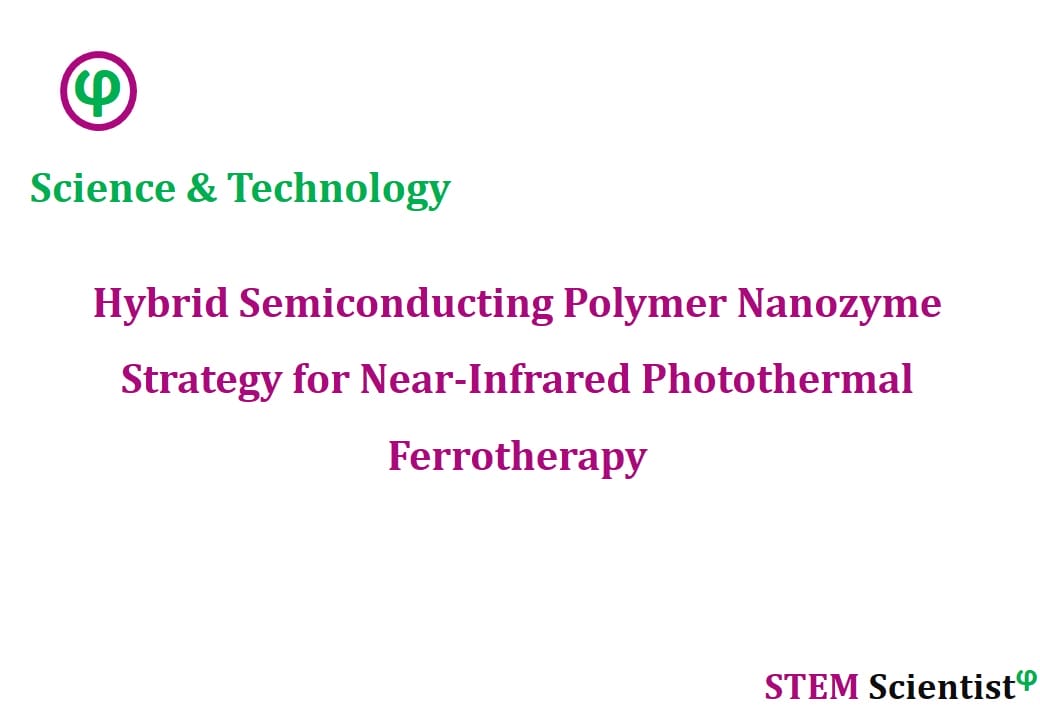
The following study was conducted by Scientists from Nanyang Technological University, Singapore; Shanxi Medical University, Taiyuan, Shanxi, People’s Republic of China. Study is published in Nature Communications Journal as detailed below.
Nature Communications; Volume 11, Article Number: 1857; (2020)
Transformable Hybrid Semiconducting Polymer Nanozyme for Second Near-Infrared Photothermal Ferrotherapy
Abstract
Despite its growing promise in cancer treatment, ferrotherapy has low therapeutic efficacy due to compromised Fenton catalytic efficiency in tumor milieu. We herein report a hybrid semiconducting nanozyme (HSN) with high photothermal conversion efficiency for photoacoustic (PA) imaging-guided second near-infrared photothermal ferrotherapy. HSN comprises an amphiphilic semiconducting polymer as photothermal converter, PA emitter and iron-chelating Fenton catalyst. Upon photoirradiation, HSN generates heat not only to induce cytotoxicity but also to enhance Fenton reaction. The increased ·OH generation promotes both ferroptosis and apoptosis, oxidizes HSN (42 nm) and transforms it into tiny segments (1.7 nm) with elevated intratumoral permeability. The non-invasive seamless synergism leads to amplified therapeutic effects including a deep ablation depth (9 mm), reduced expression of metastasis-related proteins and inhibition of metastasis from primary tumor to distant organs. Thereby, our study provides a generalized nanozyme strategy to compensate both ferrotherapy and phototherapeutics for complete tumor regression.
Source:
Nature Communications
URL: https://www.nature.com/articles/s41467-020-15730-x
Citation:
Jiang, Y., X. Zhao, et al. (2020). “Transformable hybrid semiconducting polymer nanozyme for second near-infrared photothermal ferrotherapy.” Nature Communications 11(1): 1857.


